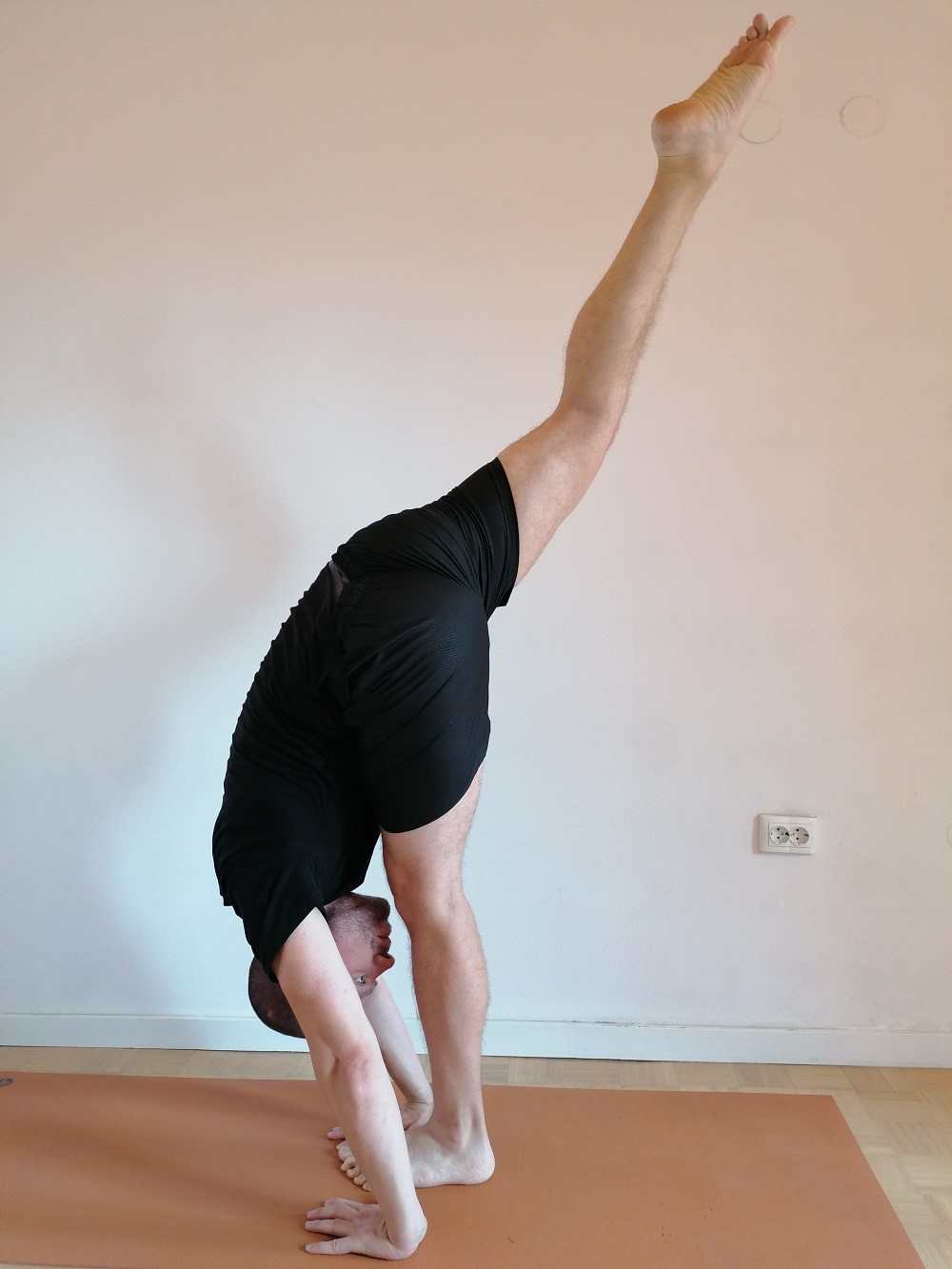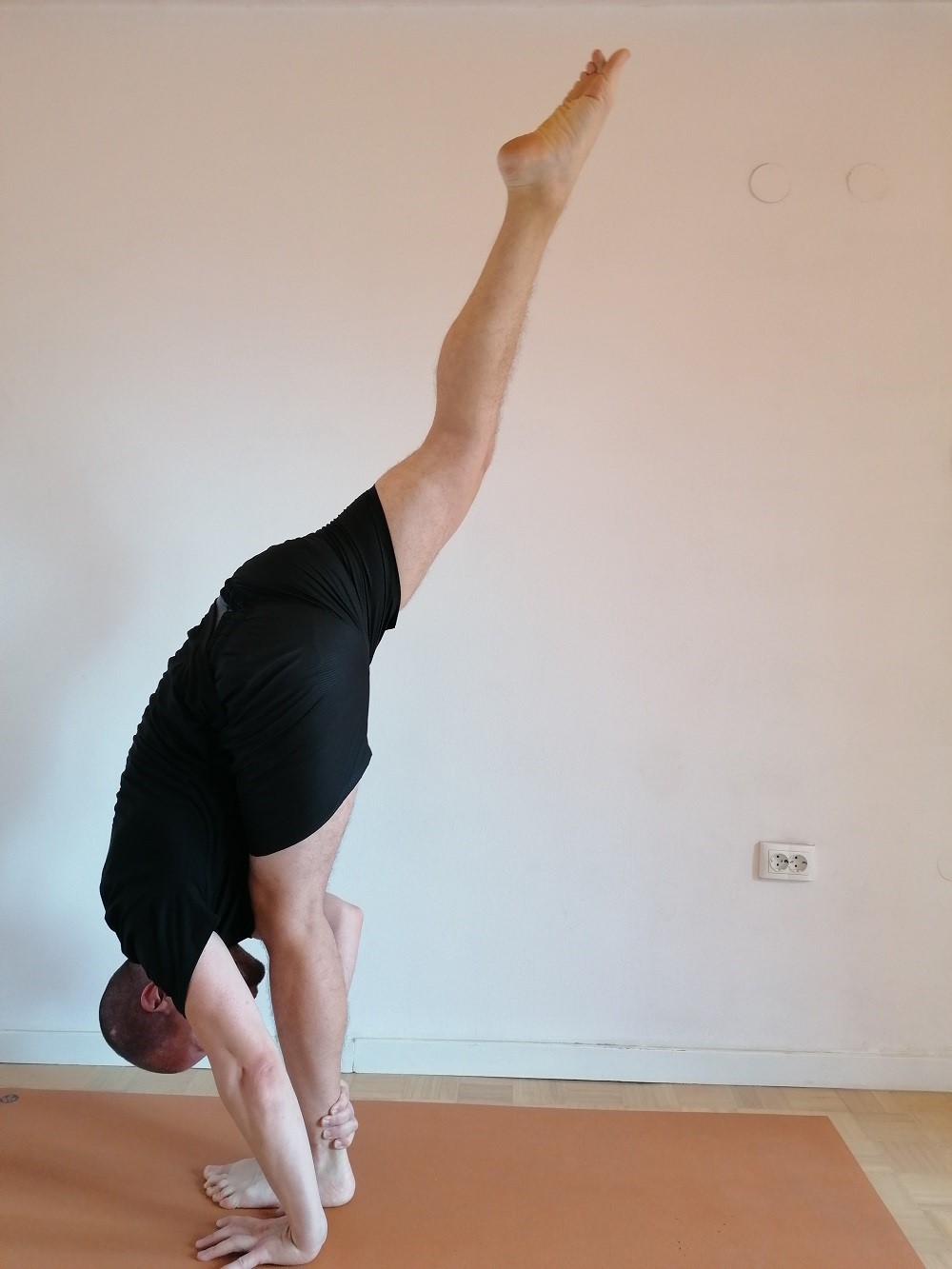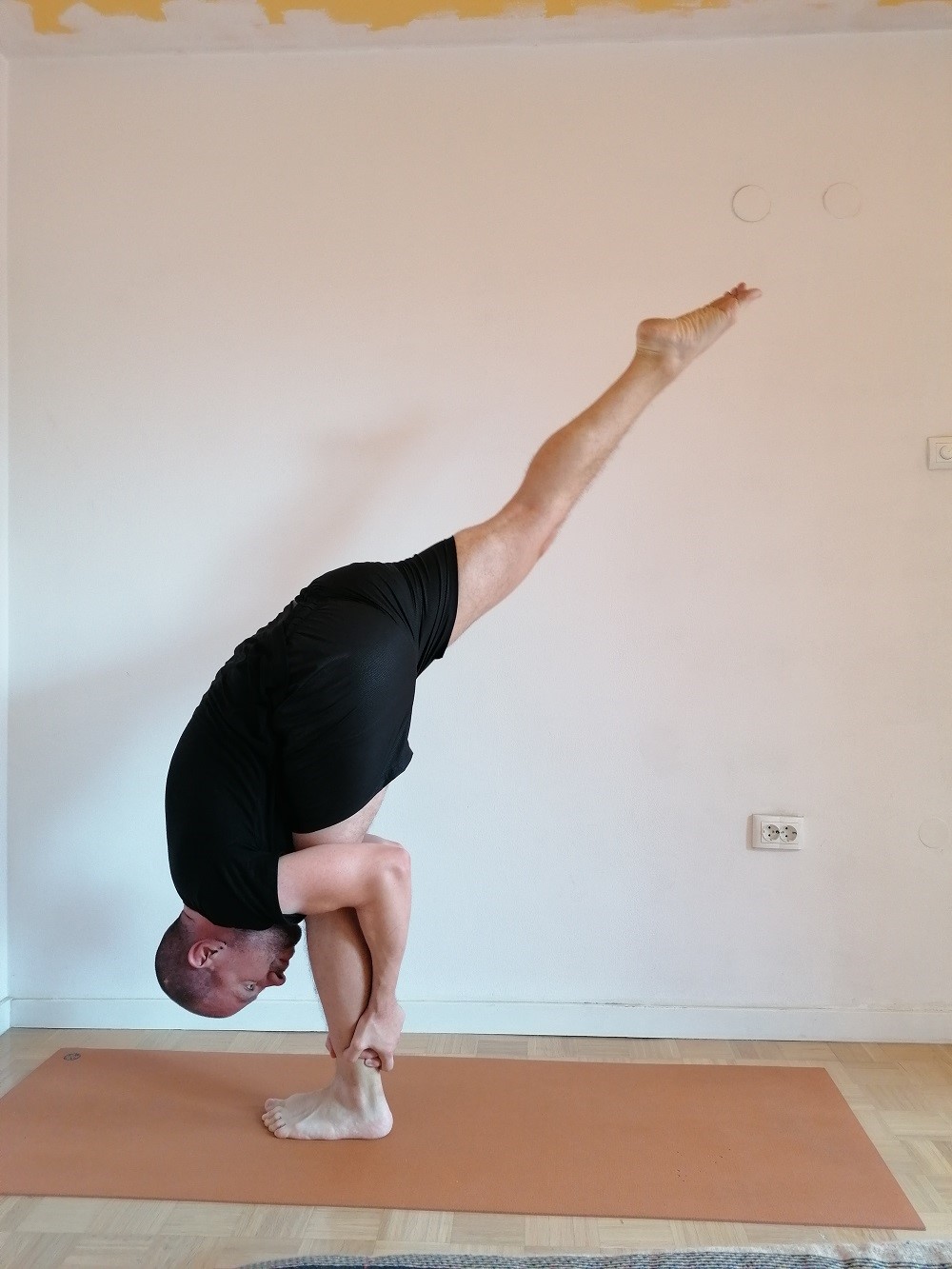Eka in Sanskrit means one, pada means foot, and uttan means intense stretching. This pose is a standing pose, so it involves your sense of balance. It is a standing balance pose with an intense stretch of one leg.
Understanding the Pose
The pose itself is generally practiced within specific yoga sequences. These sequences can be related to strengthening the core itself, or they can be about opening the hips themselves more.
By practicing this pose, you are doing good for your lower back muscles, biceps, triceps, glutes, quadriceps, hips, and hamstrings.
When performing this pose, there is intense stretching of the calves, hamstrings, quadriceps, and glutes. Since it is also a balance pose, performing it strengthens your ankles and knees. The entire lower body gets stronger while practicing this pose. We should not forget the fact that your sense of balance increases.
Eka pada uttanasana is considered an excellent pose that is practiced to detoxify the entire body. Since the hips are bent forward when performing this pose, the stomach muscles are strengthened and become more flexible. The stronger and more flexible your abdominal muscles are, the easier it will be for you to bear the “weight” of your lower back. A strong stomach leads to stronger lower back muscles. Strong lower back muscles are essential for keeping the entire spine strong and straight. When you have strong abdominal muscles, your liver and kidneys will function more properly.
This pose is also recommended for people who have problems with asthma. This is because while performing this pose, the diaphragm muscles are activated to a great extent. As a result, the breathing process itself improves and blood circulation improves.
On an energetic level, this pose is excellent for establishing internal balance. So, Eka pada uttanasana is an excellent pose for activating the third eye, or Ajna chakra. Activating the third eye improves memory, concentration, and focus. It is also important for strengthening the will of the whole body. Through the activation of the third eye, the yoga practitioner becomes calmer and more satisfied with everything happening around him, accepting things as they are.

How to Do It
If you are not yet able to do the pose fully, feel free to work on improving the part of your body that you feel is holding you back.
They are mostly unstretched hamstrings or inflexible hips. If that’s the case, then commit to those poses. I advise you to practice yin poses to open your hips and stretch your hamstrings. So, if you are able, stay at least 3 minutes in each of the yin poses that concern the hips and hamstrings.
If you do not currently have a well-developed sense of balance, I advise you to practice one version of Warrior 3. Rest the foot of the non-steady leg on the wall with its entire surface. Feel the support of that foot against the wall through the heel, sole, and toes. Push hard against the wall with that foot. The rest of your body is in a warrior position. So, your back is stretched, and your arms are fully extended. If you wish, you can gently place your hands on the yoga mat, next to the feet of the landing leg. That way, you are one step closer to fully performing eka pada uttanasana.
Another pose that I recommend practicing if you are not yet able to do eka pada uttanasana in its entirety is the half-moon pose. When performing this pose, there is a fine rotation of the hip of the raised leg. During the pose itself, you can use the block as a support in case you cannot lower the palm of the hand that is completely on the yoga mat.
Remember, never force your body to open and let it develop at its own pace.
When it comes to the full pose, there are several variations.
The first variation involves placing both of your palms on the yoga mat. In this way, you achieve additional balance in relation to the full pose where both your palms are on the ankle joint or the sole of the landing leg.

The second variation is that the palm of the left hand is on the yoga mat and the left leg is standing The right hand is placed on the ankle or calf of the left leg. Lift your right leg back up as far as possible.

If you want to develop an additional sense of balance, you can try closing your eyes when you enter your final pose, regardless of whether it is a variation or a complete pose.
Conclusion
Eka pada uttanasana is one of the more demanding yoga poses for several reasons.
The first is the developed sense of balance. To achieve that sense of balance, the third eye must also be in balance. More precisely, there must be a developed sense of inner peace and stability in the practitioner. If this feeling is not developed from the inside, it will be difficult to develop an external sense of balance.
Another reason why this pose falls into the category of more demanding poses is since the hips of the practitioner must have a good rotation, there must be a good stretch of the hamstrings and a fine stretch of the entire spinal column. There must be strength in the ankle joints and in the stomach muscles.
Each pose in yoga depends on several factors, such as the case with eka pada uttanasana. The physical and energetic aspects form a whole in yoga that is essentially impossible to separate.
As the practitioner improves in one segment, he simultaneously improves in the other segment. Consequently, you do each pose fully consciously, with understanding, and with a lot of attention.







